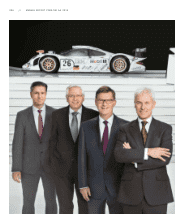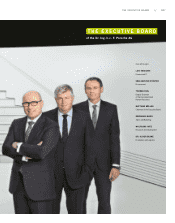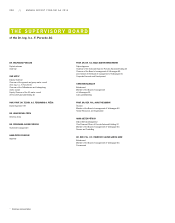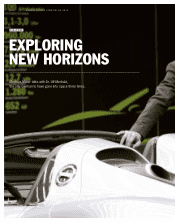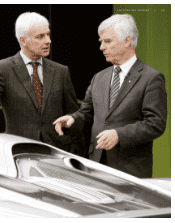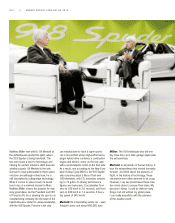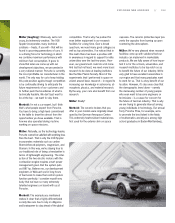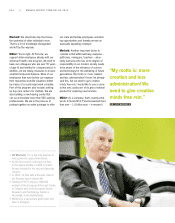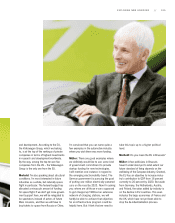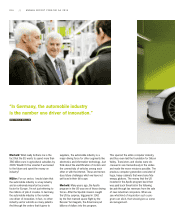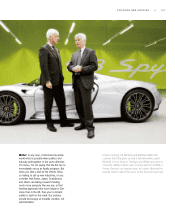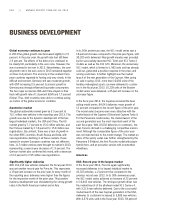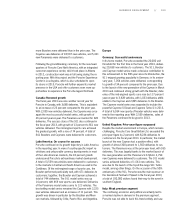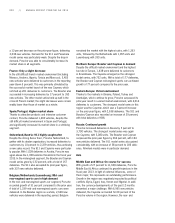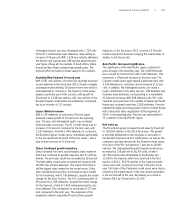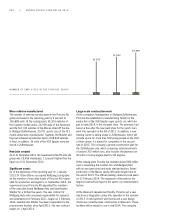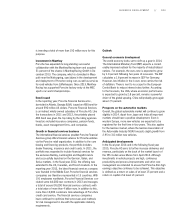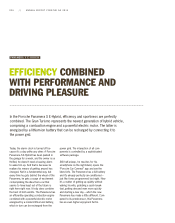Porsche 2013 Annual Report Download - page 18
Download and view the complete annual report
Please find page 18 of the 2013 Porsche annual report below. You can navigate through the pages in the report by either clicking on the pages listed below, or by using the keyword search tool below to find specific information within the annual report.
016 // ANNUAL REPORT PORSCHE AG 2013
Merbold: What really bothers me is the
fact that the EU wants to spend more than
380 billion euro in agricultural subsidies by
2020. Wouldn’t it be smarter if we looked
to the future and spent the money on
industry?
Müller: For our sector, I would claim that
the automobile industry is a key industry
and an extremely important economic
factor for Europe. I’m not just referring to
the millions of jobs it creates. In Germany,
the automobile industry is the number
one driver of innovation. In fact, no other
industry sector submits as many patents.
And through the orders that it gives to
suppliers, the automobile industry is a
major driving force for other segments like
electronics and information technology. Just
think about the electrification of motors and
the connectivity of vehicles among each
other or with the internet. Those are tremen-
dous future challanges which we have not
yet faced in their full scope.
Merbold: Many years ago, the Apollo
program in the US was one of those driving
forces. After the Sputnik mission caught
the US by surprise, triggered in 1961
by the first manned space flight by the
Russian Yuri Gagarin, the Americans put
billions of dollars into this program.
This spurred the entire computer industry,
and thus even laid the foundation for Silicon
Valley. Transistors and diodes were de-
creased in size tremendously in the sixties
and made the moon missions possible. The
previous computer generation consisted of
huge, heavy cabinets that were bona fide
energy gluttons. The money that the US
invested in the Apollo program back then
was paid back three-fold in the following
decade through tax revenues from the sale
of new industrial computers. When we
see what kind of inspiration such a pro-
gram can elicit, that should give us some
encouragement.
“In Germany, the automobile industry
is the number one driver of innovation.”
MATTHIAS MÜLLER


